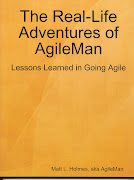Three hundred pages later, and sitting comfortably poolside, I finished Bryan Talbot's Alice In Sunderland hardcover this afternoon. I'm not sure what I was expecting it to be, but it probably wouldn't have mattered anyway: there's no way I could've anticipated such a one-of-a-kind literary work!
What this book is, is a little hard to describe. I guess I'd call it a historical travelogue through all manner of people, places and things related to Alice in Wonderland. Talbot apparently spent several years researching the material, and he delivers it in comic book form (or, if you prefer: graphic novel form!) with various talkative characters standing in for himself. He spans over a thousand years of English history in a ricocheting narrative thread that moves forward and backward through time and space, always tying back to fictional Alice, her creator Lewis Carroll (real name: Charles Dodgson), the real life child-friend of Carroll/Dodgson Alice Pleasance Liddell, or the town of Sunderland (posited as the inspiration for much of Wonderland). At times, it's absolutely riveting; at others, it seems to lose its way just a bit. But his artwork is strong and vibrant enough throughout to keep boredom at bay no matter where Talbot strays.
I learned all kinds of Alice-lore from the book, but I suspect what will stay with me longer are some of the weirder bits of history that are only tangentially related to Carroll's famous books, Alice's Adventures in Wonderland and Through the Looking Glass and What Alice Found There:
- the tale of Victoria Hall, in Sunderland, which in 1883 was the site of a tragedy in which 191 children were killed when a stampede to the stage occurred and a surge of unfortunate kids ran into a door that opened the wrong way (inwards);
- the assertion that Sunderland's Joseph Swan invented the light bulb, not American Thomas Edison, and that the two averted a lawsuit over patent-infringement by joining forces to form an electric company - using Swan's design, not Edison's!
- the fact that wyrms (dragons) were so commonly believed to exist in that part of England hundreds of years ago that each region has its own folklore revolving around some local hero having slain the beast!
- the notion that mid-nineteenth century England, with its high child-mortality rate, developed a cult of the child mentality in which the depiction of the young, often naked, was commonplace (today, that's called child pornography!)... so common, in fact, that Lewis (or Dodgson) participated in it himself, having photographed pre-teen Alice, sans clothes, with nary a raised eyebrow!
And many more items of similar interest. It's a long read (I spent several weeks, often reading no more than 20 or 30 pages at a time, so as to be able to take it all in) but a thoroughly entertaining one. I suspect most comic fans wouldn't enjoy it as much as I did, though, as it often bears more of a resemblance to a historical text than a comic book.
Monday, July 02, 2007
Subscribe to:
Post Comments (Atom)















1 comment:
Sounds interesting... somewhat along the same lines as (what I've read of) The League of Extraordinary Gentlemen, in that every panel is filled with references to other real and literary works.
The Wikipedia entry on Swan/Edison calls their work a "collaboration", which sounds a little less acrimonious than Talbot's take. It also makes the point, however, that Edison took credit where little or none was due, and indirectly shows that the U.S. patent system---which I'll admit to having profited from---has always been broken.
Post a Comment